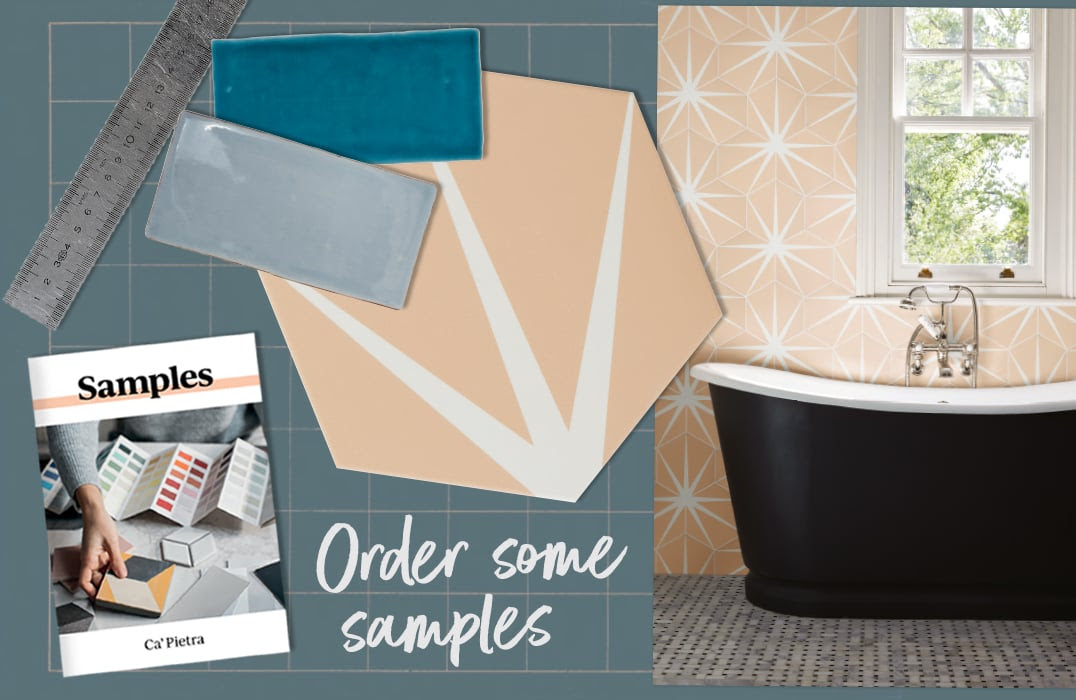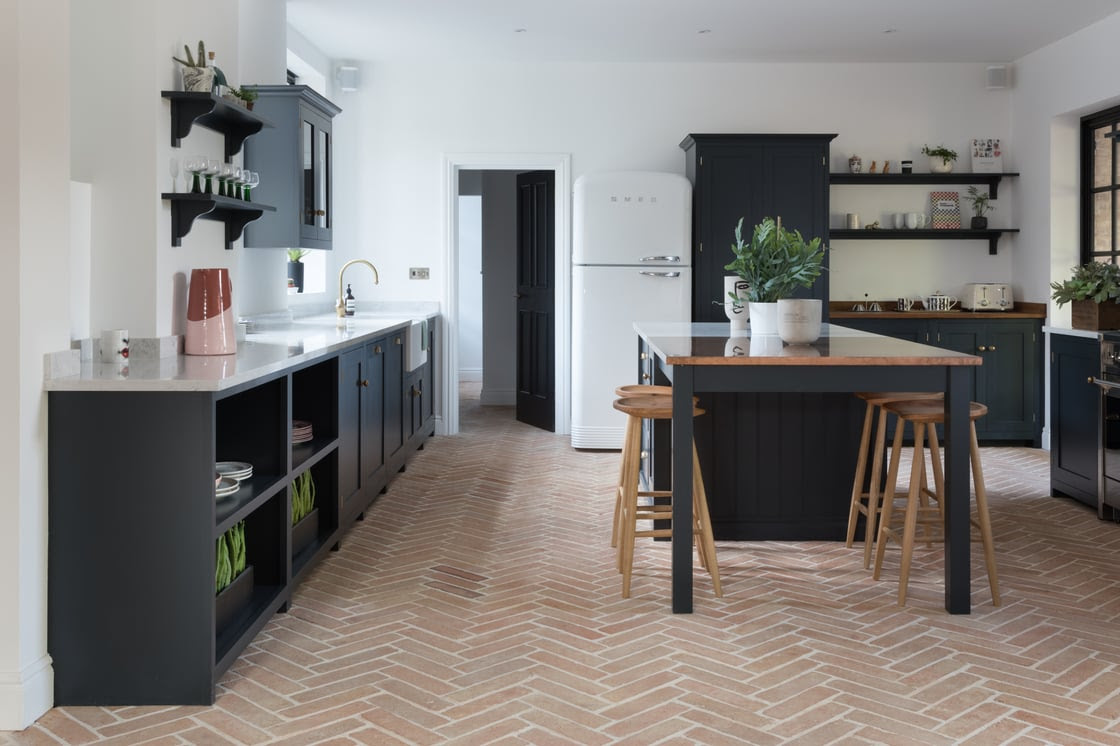10 common mistakes to avoid when buying tiles
 |
 |
| We understand that choosing tiles is both an exciting venture, but also a task where you will need to have your wits about you to ensure you get it right first time. Floor and wall coverings can make or break a room, and getting it wrong can be a costly mistake to have to correct. To help you with your decision making, we’ve pulled together the 10 common mistakes to avoid when buying tiles.
1. Not ordering enough tiles
You’ve spent time doing the calculations and ensuring you’ve ordered the exact amount of tiles, only to get to the end of your bathroom or kitchen renovation and realise you’re a few tiles short of completing it – definitely one of the most frustrating feelings in the world that’s for sure, even more so if you’ve hired a professional in to fit it!
A common and sometimes costly mistake when ordering tiles online is not taking into consideration wastage and breakages, which is why we recommend ordering an extra 10% to cover this. A small cost for ensuring you have the right amount of tiles to complete your project. Please note, when it comes to laying tiles in a herringbone formation, we recommend ordering an extra 15%, to allow for all of those fiddly cuts that need to be made.
It’s also worth noting that different batches of tiles can vary in colour too, so that’s why it’s even more important to get it right from the get-go, to prevent any mix-match shades in your design. |
 |
2. Picking the wrong size tiles
Tiles come in a vast range of sizes, from 7.5 x 15cm metro bricks to large format 60 x 120cm tiles. Whilst these mean you have the freedom to create your perfect home, picking the wrong size can mean the difference between the success or failure of a project.
The main thing to consider is how the tile will look in the room. A larger room will generally be able to accommodate large format tiles better than a small room like the downstairs loo. Whilst smaller rooms, like bathrooms may benefit from smaller mosaic style tiles better than an open plan kitchen-diner for example. Another thing to consider is grout lines as these will make an impact on the final result. The smaller the tile, the more grout lines and this can make the space look busy. If lots of grout lines are unavoidable, consider using a coloured grout in a similar shade to the tile to help them flow in more symmetry. |
 |
3. Not ordering a sample first
Another common issue is not ordering a sample of your chosen product first. Ordering either a swatch sample (a small cut of the full tile) or a full tile sample (the best for helping you envisage how it will look in your home), will help you to see the true colour, texture and finish on a tile.
We also offer 30 x 40cm samples on our large format tiles, including natural stone. These are particularly helpful in showing the pattern and tonal variations on natural stone products such as limestone and marble where no two are the same. |
 |
4. Choosing price over quality
As the saying goes, “buy cheap, buy twice”. Purchasing a lower cost but inferior product may save you money initially, however it will inevitably need replacing much quicker than those of better quality.
5. Not planning the layout
Ahead of fitting the tiles, it’s important to consider layout and how you would like them to appear, ideally creating a rough design sketch beforehand. Not only will this help you determine how many tile cuts are needed, in turn helping you order the correct amount, it will also help to confirm that you have the right size tiles for the space. |
.jpg?width=1120&upscale=true&name=DC4223-001%20(1).jpg) |
6. Not picking the right tile for the job
Where you are adding tiles will influence the type of tile you will want to go for. For example, is the tile going to be used externally or internally? If externally, is the material weatherproof and slip resistant? If internally, is the tile suitable for heavy foot traffic, can it be used with underfloor heating, does it need sealing regularly or is it light enough to be used as a wall covering? You might love a product but it's so important to check that a tile will work in the intended space, the last thing you want are cracked tiles or stone that is slippery when laid in an unsuitable area. |
 |
7. Not hiring a specialist
Installing tiles is a specialist job. The skill and experience required for this should not be underestimated, and that’s why one of the most costly mistakes you can make is to use an inexperienced tiler. When choosing the right tiler for your project, consider someone who is experienced in the particular material you have chosen. Whilst porcelain and ceramic tiles are most commonly used, large format, encaustic, glass and natural stone tiles can come with their own set of challenges during fitting. Another top tip is to not book your tiler until you’ve received your goods to ensure you don’t have a tiler sat waiting for nothing to do, whilst still invoicing you for their time. |
 |
8. Not factoring in delivery
Once you’ve decided the right tiles for the space and the right amount needed, it’s worth considering delivery time and how the tiles will be delivered. If ordering a large amount, they will likely arrive on a pallet, often meaning curb side delivery if a large hard surface driveway is not available.
Once you receive your order, check that you have all your tiles and that they are in good condition. If you opted for natural stone, please remember there may be some variations in colour, tone and natural character which make them so beautiful and unique to each project. We recommend that you ‘shuffle’ tiles from different boxes so that you have a uniform effect across the whole surface. |
 |
|
9. Not sealing your tiles
Don’t allow your efforts in finding the right tiles for your project be in vain. If you have purchased natural stone, or tiles that require sealing, it is important to ensure you seal them correctly and with the right product for the job.
Our natural stone, encaustic, crackle glaze and terracotta products will require sealing. Once your tiles are installed, you will need to use an impregnating sealant for protection against fading and staining, such as Stone Essentials Stain Block (or for crackle glaze tiles, a crackle glaze sealant). This should be applied after they have been installed and cleaned using Stone Essentials Deep Clean or similar, but prior to grouting, in accordance with the product label. You should apply a second coat after grouting. You could also choose to apply a surface finish such as Stone Essentials Stone Shield or Wax polish as this will offer further protection and give an attractive patina, although in non-wet areas only. This would be applied after grouting once fully dry (around seven days depending on humidity).
|
 |
10. Picking the wrong grout colour
Not only will grout colour affect the final project result, picking the wrong colour could also affect and even damage your tiles. We recommend using lighter coloured grouts for most products, in particular natural stone, encaustic and terrazzo tiles, rather than black or bright coloured as these can cause staining in the natural pores of the tiles.
Ensure you have selected a grout product that is suitable for use with the material of your chosen tile, and desired joint width. We recommend our Resin Cement Colour Grout, which can be used with porcelain and ceramic tiles, as well as glass mosaic, natural stone, marble and composite materials too. |
 |
| VIEW OUR COLLECTION |
